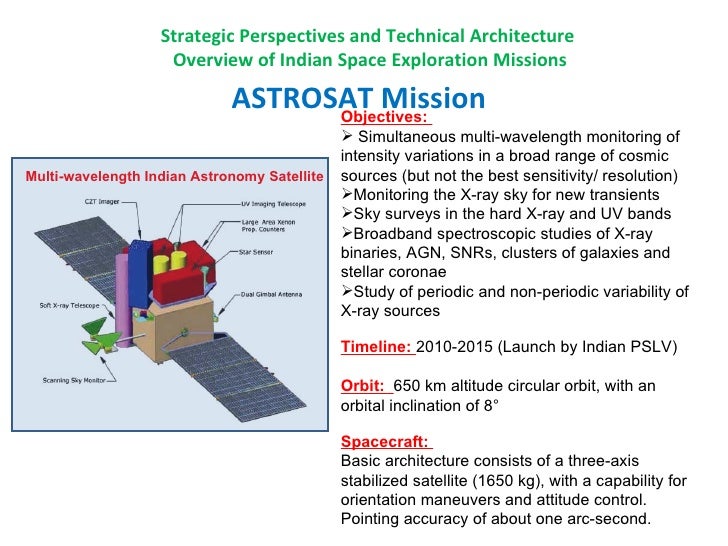India’s first astronomy satellite will be launched on
September 28. ISRO has noted that while it has launched payloads capable of
making astronomical observations before, this is the first time
one dedicated to astronomy will be launched.
|
Firstly,
what is a ASTRONOMY SATELLITE ?
Astronomy satellites have
many different applications:
|
India’s first astronomy satellite called ASTROSAT, was first scheduled for launch in 2005, then in 2010, and
finally in 2015 with delays largely due to putting the scientific payload
together.
- ASTROSAT will be a multi-wavelength
mission, observing the cosmos in X-ray, visible and UV light.
- ASTROSAT is one of two scientific missions
that have long been overdue – the other being the Aditya-1
mission to study the Sun.
ASTROSAT comprises five scientific instruments, all of which had been delivered to the ISRO Satellite Centre by 2014.
- UV Imaging Telescope
- Scanning Sky Monitor
- Cadmium-Zinc-Telluride Imager
- Soft X-ray Telescope and
- three identical Large Area Xenon
Proportional Counters.

The Soft X-ray Telescope reportedly took 11 years to
be built. ASTROSAT cost Rs.178 crore.
Why this astronomical satellite ? Can't we
study this from ground ?
- X-ray and UV radiation fall in the
short-wavelength part of the electromagnetic spectrum, and their emissions
in the universe can’t be detected at ground level because
the high-energy photons that constitute the radiation can’t
easily penetrate Earth’s atmosphere. The opposite is true for
long-wavelength radiation like radio waves.
- As a result, the most powerful and
effective X-ray and gamma-ray satellites are in Earth-orbit whereas
radio-telescopes – with their giant telltale antenna dishes – are on
ground.
What else ?
- The launch of the spacecraft will be especially beneficial
for the Indian astronomical community, as it will reduce the community's
dependence on data from external sources like the Hubble.
- The launch will also make India a member of the exclusive
space club of countries with space observatories, which currently includes
- U.S., Europe, Russia and Japan.
- As with the launch of MOM, the scheduled launch of Astrosat
will yet again proved to the world, India's space capabilities.
Comparing Astrosat with
Hubble Space Telescope !
- One of the better known examples of
multi-wavelength space-borne observatories is the Hubble Space
Telescope, which makes observations in the UV, visible and infrared parts
of the spectrum.
- However, comparisons between the telescopes are unfounded because Hubble’s
optical mirror is eight-times as wide as ASTROSAT’s, allowing for a deeper field of
view and much better imaging.
- Nonetheless, ASTROSAT will be able to
contribute in the study of time-variable sources of radiation by
being able to observe the sources in UV and X-ray wavelengths
simultaneously.

